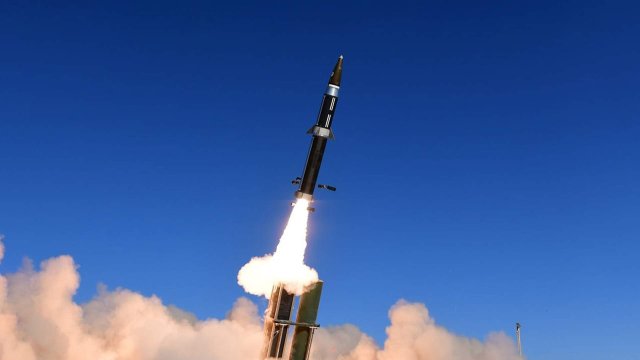The Americans have decided which strategic weapons systems will be deployed in the coming yearsIn the USA, a new — record—breaking - defense budget was adopted this week.
Congress has agreed on the Pentagon's spending for fiscal year 2023 in the amount of $858 billion. This is $80 billion more than this year. One of the reasons for such a significant increase is the work on new missile programs. We are talking, in particular, about the development of a replacement for the LGM-30G Minuteman III intercontinental ballistic missile, new models of weapons for the ground forces, strategic aviation and fleet. How the development of new missile systems will affect the capabilities of the American army in the coming years — in the material of Izvestia.
Old people to replace
One of the main components of the American strategic nuclear triad is the LGM—30G Minuteman III intercontinental ballistic missiles. It is three-stage, mine-based, with separable individual guidance heads. The third "Minuteman" was adopted already in 1970 and has since undergone several upgrades. The fuel in the rocket's main engines was changed, control systems, combat equipment, and basing infrastructure were improved.
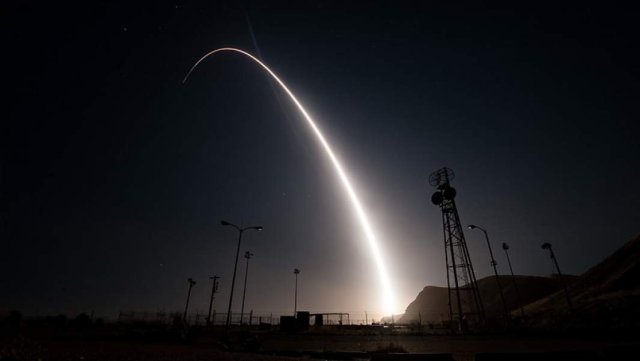
Test launch of the Minuteman III intercontinental ballistic missile at Vandenberg Air Force Base, California
Image Source: Photo: Global Look Press/Ian Dudley
But, despite the constant modernization, it's time to prepare a replacement for the "Minutemen". And work on this in the United States has been underway since 2016 under the Ground Based Strategic Deterrent program ("Land-based strategic deterrence"). In August 2017, the Northrop Grumman company won the competition for the implementation of the development with the LGM-35A Sentinel ("Sentinel") rocket project.
The solution will be relatively economical — new missiles should be placed in the converted old Minutemen mines. Continuity is also planned for many units of the complex. The combat equipment at the first stage will also be partially used from the "Minutemen" — a new, more advanced Mk-21A combat unit is being created on the basis of the current Mk-21 warhead and with the same W87 thermonuclear charge from the current strategic warheads.
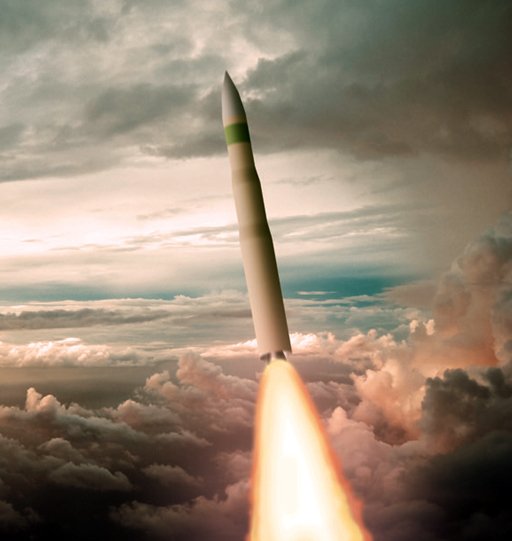 |
| The design image of the LGM-35A Sentinel rocket. |
| Source: Northrop Grumman |
But the rocket itself will be completely new — new main stages, engines, control system. More energy, higher speed, higher accuracy. It is already known that the product will be three-stage with solid-fuel engines. Probably, in the future, the rocket will be able to use promising hypersonic combat equipment, which has not yet been created overseas.
The first missiles of this type should be on combat duty in 2028. This means that already in 2023, active work will begin on the creation of the first samples for testing. Time is short, and modern technology requires an increasingly long cycle of "development – testing – production".
Hypersonic Myth
In 2023, the US ground forces should begin to receive the universal land mobile missile system MRC Typhon (Typhon is a giant from Greek mythology who defied the Olympic gods. — Izvestia) with a launcher that can carry both Tomahawk-type cruise missiles and SM-6 anti-aircraft missiles with a long range. By the way, the new version of the SM-6 Block IV rocket will have hypersonic speed and will become universal in terms of targets — it will be able to hit not only air, but also sea and land at a range of up to 740 km.
It is in the fiscal year 2023 that the first battery of new missile systems should reach combat readiness. And in the future, these missile systems will be supplemented from below with Lockheed Martin PrSM (Precision Strike Missile) mobile complexes with a range of about 500 km, and from above with the LRHW Dark Eagle (Long Range Hypersonic Weapon) hypersonic missile system with a range of 2775 km. Thus, a mobile ground—based missile triad will be formed, covering the entire range of short and medium range - just such missiles were prohibited by the treaty between the USSR and the USA, from which the Americans withdrew on August 2, 2019.
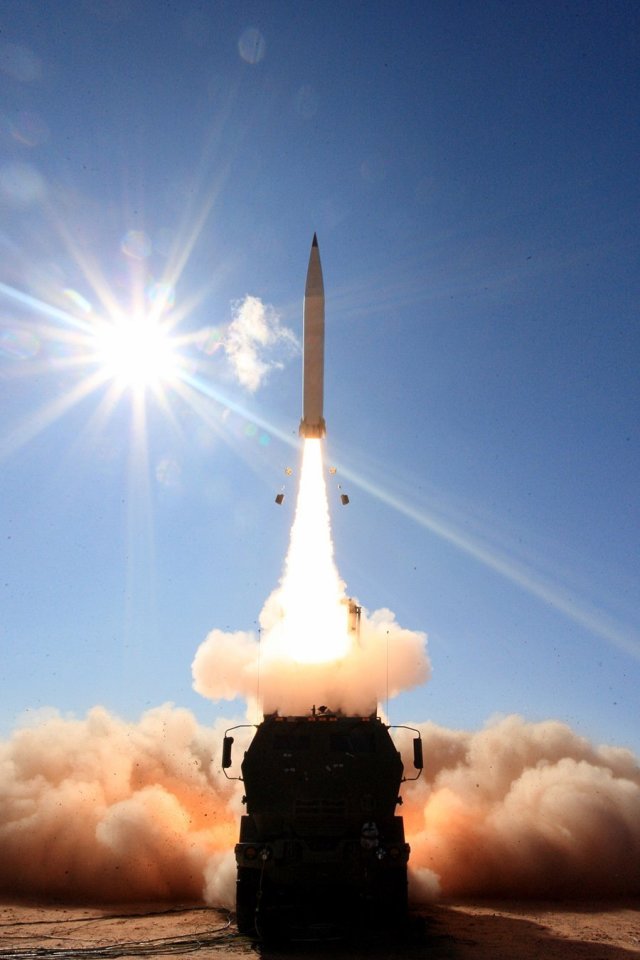 |
| Test launch of the Precision Strike Missile from the Himars launcher. |
| Source: Lockheed Martin |
The main problem of these missile systems for US adversaries is that they are airmobile and can be deployed anywhere in the structure of the ground forces. For example, to Germany or Poland. At one time, Pershing II ballistic missiles, which the United States deployed in West Germany, with high accuracy and flight speed, could become a serious factor in the likely nuclear confrontation between the United States and the USSR.
Now, due to the expansion of NATO's borders to the east, the distance is decreasing, the speeds are noticeably increasing, and the accuracy of missiles can no longer be measured even in tens of meters. Even without a nuclear warhead, such missiles can destroy command posts and small highly protected targets.
The flight time of the Dark Eagle rocket at full range will be only about one minute. During this time, it will be extremely difficult to get the target object out of harm's way or leave it. The fight against hypersonic warheads, as we already know, is an extremely difficult task even for powerful modern missile defense systems.
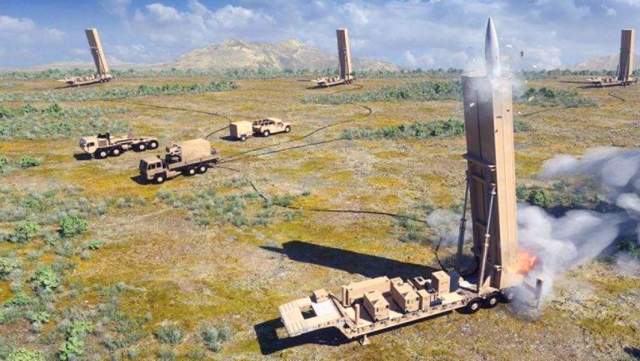
Combat use of the LRHW Dark Eagle in the artist's view
Image Source: Photo: U.S. Department of Defense
And in the interests of the US Navy, another Conventional Prompt Strike hypersonic missile system (CPS - "Non—Nuclear Fast Strike") is being created — the naval part of the Long-Range Hypersonic Weapon program. In the summer of this year, the test launch of a hypersonic missile, which is being created under this program, ended in failure, but work on the complex continues and in the coming years it is planned to equip promising "stealth" destroyers of the Zumwalt type with these missiles, followed by the rest of the ships and submarines of the largest fleet on the planet. Hypersound will come to the American navy in the middle of this decade.
Air priorities
The AGM-183A hypersonic missile is being created for strategic aviation. Its tests are already underway, and in the coming years the new missile will enter service with the B-52H Stratofortress type bombers, and will also certainly be part of the ammunition of the newest B-21 Raider. The creation of a missile under the ARRW (Air-Launched Rapid Response Weapon — "Air-based Rapid Response Weapon") program is being conducted by Lockheed Martin Corporation.
Work on this rocket has not always gone smoothly, but now, apparently, the creators are reaching the finish line, and the deployment of this system may also begin in the coming years. This is an aeroballistic missile with a hypersonic gliding combat unit, with a flight speed of up to 20M and the ability to hit targets at a range of up to 925 km.
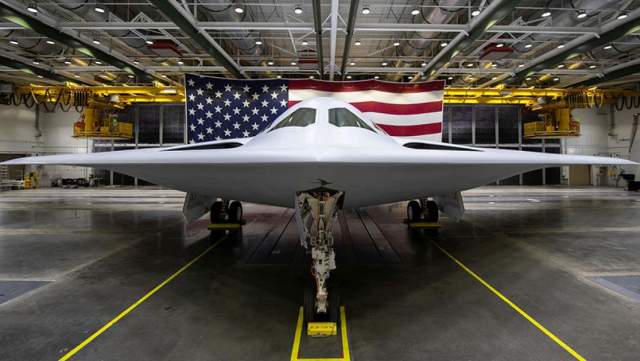
A B-21 Raider stealth bomber developed for the US Air Force during a presentation in Palmdale, California
Image source: Photo: REUTERS
For all these missile complexes in 2023, work is moving to the stage of either active development, or military tests, or the deployment of the first combat formations. Collectively, the United States can conditionally call 2023 the "year of missile systems." And yes, they will not necessarily be deployed against Russia. This could also happen in Southeast Asia against China. Or in any other region against any country that confronts America.
The appearance of such missile systems, of course, will bring any confrontation to a whole new level and will trigger retaliatory actions by all the main players in the missile race.
Dmitry Kornev
